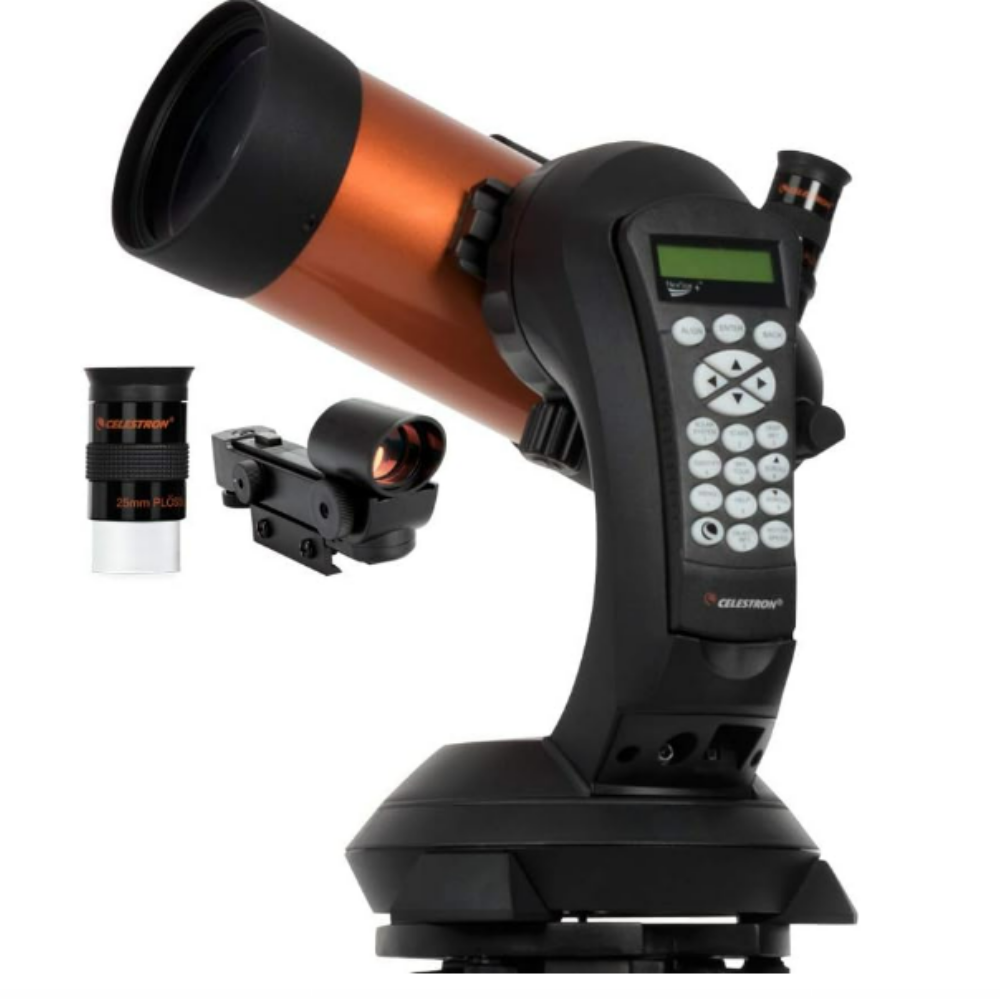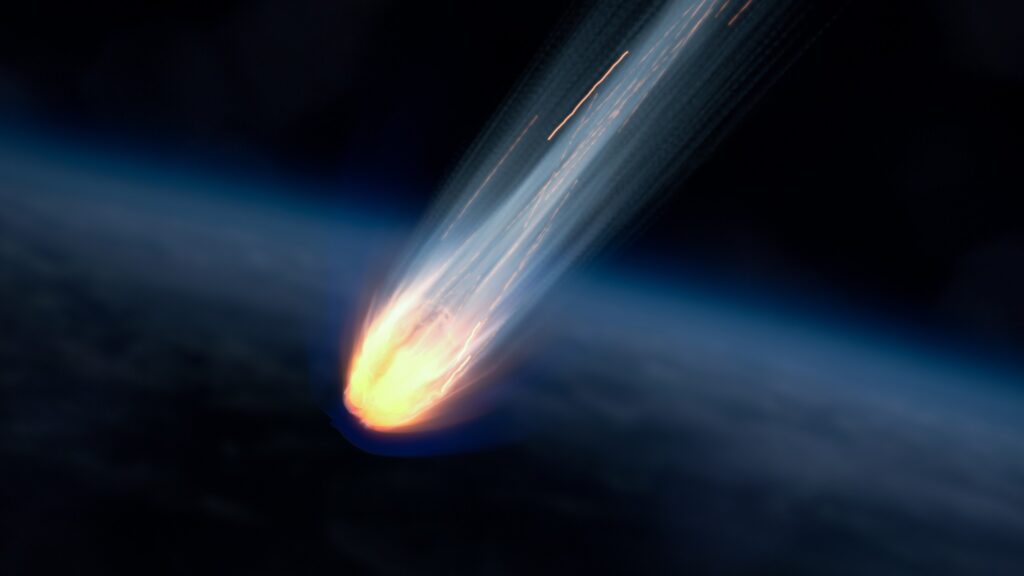The new moon of December occurs tonight. A day later, Southern Hemisphere observers will see the peak of the Phoenicid meteor shower, and on Dec. 4 the waxing moon will make a close pass to Venus in the evening sky.
The exact moment of the new moon occurs at 1:21 a.m. Eastern Time (0621 UT) on Dec. 1, according to the U.S. Naval Observatory. A new moon is when the moon passes between the Earth and the sun, specifically when the sun and moon share the same celestial longitude (also known as right ascension). A north-south line from the celestial pole would pass through both.
New moons aren’t visible unless there is a solar eclipse, and that means the nights are particularly dark; when meteor showers occur on or near new moons it’s a lot easier to see them as the moon’s light isn’t washing them out.
A young moon passes Venus
TOP TELESCOPE PICK:
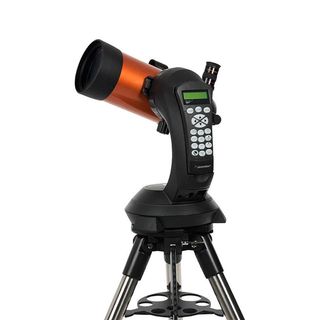
Want to see planets up close in the night sky? The Celestron NexStar 4SE is ideal for beginners wanting quality, reliable and quick views of celestial objects. For a more in-depth look at our Celestron NexStar 4SE review.
On Dec. 4 the moon and Venus will share the same right ascension, going into conjunction and approaching within about 2 degrees of each other in the evening sky. From New York City the 3-day old moon will appear to pass to the south of Venus (below and to the left) at 5:41 p.m. Eastern Time; sunset in New York is at 4:28 p.m. on that day. The moon sets at 7:26 p.m., Venus follows at 7:36 p.m.
You may like
As one moves south the moon and Venus appear higher in the sky, though the sun will appear to set later. Sunset in Miami, for example, is at 5:30 p.m. and at that point the moon will be 30 degrees high in the southwest. A sharp-eyed observer might catch the moon just before the sun sets and by the time the conjunction happens (5:41 p.m. local time) Venus should be just visible against the darkening sky; the planet sets at 8:39 p.m. Eastern.
From Honolulu, Hawaii, the conjunction won’t be visible – it happens there at 12:41 p.m. local time. Sunset is at 5:49 p.m., by the end of civil twilight at 6:13 p.m. the moon will be about 30 degrees high and appear to the left of Venus (which should also start to come out against the sky). Venus sets first, at 8:59 p.m. and the moon follows at 9:12 p.m.
In Buenos Aires, where sunset is at 7:55 p.m., the conjunction occurs at 7:41 p.m. local time, so Venus itself will be invisible until about 8:30 p.m. The moon will be about 40 degrees high in the west. Venus will appear to the right and just below the moon as the sky darkens, and the planet sets at 11:08 p.m.
If you want to try your hand at capturing the night sky on camera, we can help. Check out our guides on how to photograph the moon or how to photograph the planets to learn more about basic astrophotography and how to shoot the night sky.
And if you need optical equipment or photography gear, consider our best cameras for astrophotography and best lenses for astrophotography .
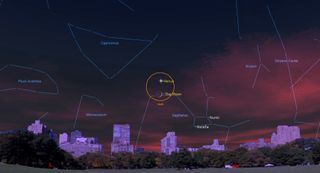
Phoenicid meteors
The Phoenicid meteor shower peaks on Dec. 2, a day after the new moon. It’s a shower that is active from Nov. 28 to Dec. 9, and has a lot of variation in the number of meteors one can expect to see. The name comes from the constellation Phoenix, none of whose naked-eye stars are visible from above the 48th parallel north; the constellation doesn’t get fully above the horizon until one reaches 22 degrees north; the latitude of Kauai, Hawaii, Cuba, or central Mexico. The Phoenix is therefore best seen from the Southern Hemisphere.
In mid-southern latitudes – places such as Cape Town, Santiago, Chile, or Melbourne, Australia – the Phoenix is already high in the south-southeast when the sky gets dark, which is about 9:30 p.m. (sunset on Dec. 2 in Santiago, Chile is at 8:39 p.m., while in Cape Town it is at 7:43 p.m. and in Melbourne, Australia it is at 8:26 p.m.). The number of meteors usually seen is small, and they tend to be slow, but on occasion there have been bursts of activity.
According to the International Meteor Society the shower was probably most active when it was first noticed in 1956 and produced 100 meteors per hour in a meteor storm; later showers have produced nowhere near that – on the order of only a few meteors per hour.
The shower’s radiant point and the number of meteors varies because it is associated with the comet 289P/Blanpain, which has a period of about 5.2 years and is often perturbed by the planet Jupiter. The radiant point will be just north of the Phoenix (technically it is in Cetus, the Whale, but it was in the Phoenix when it was observed in 1956 and as late as 2014). A notable characteristic of the Phoenicids is that they are slow meteors, so when one does see them they are visible longer.
Stars and constellations
Even if one can’t catch the conjunction of the young moon, on the night of Dec. 1 three other naked-eye planets will be out and relatively easy to see (Mercury will be lost in the solar glare). The skies in mid-northern latitudes get dark early – in New York, Chicago, Denver or San Francisco the sun is set by 5 p.m., and the timing is similar in European cities, much of Asia and the north coast of Africa.
Venus will be bright in the western sky – in New York the planet sets at 7:30 p.m. on Dec. 1. Saturn will be visible almost due south; it transits (crosses the meridian, reaching its highest altitude) in New York at 6:11 p.m. and sets at 11:43 p.m. Jupiter rises at 4:49 p.m. in New York, and by 6 p.m. it is 10 degrees high in the east, flanked on the right by Aldebaran, the alpha star of Taurus, the Bull.
Mars rises at 8:25 p.m. in New York (the local timing will be similar in locations of similar latitude) and is in the constellation Cancer, so it will stand out as the single brightest “star” in that part of the sky; both Jupiter and Mars will reach high altitudes for Northern Hemisphere sky watchers. Jupiter, for example, transits in New York at 12:13 a.m. Dec. 2 and will be 75 degrees above the southern horizon, while Mars will do so at 3:49 a.m. and hit 71 degrees.
For Southern Hemisphere observers, the austral summer means late sunsets – in Santiago, Chile, for example, sunset on Dec. 1 is at 8:38 p.m. local time, and in Christchurch, New Zealand, which is about as far south of the equator as Boston is to the north of it, sunset isn’t until 8:54 p.m. local time.
That means the sky won’t look dark until about 9:30 p.m. (in Christchurch, civil dusk ends at 9:29 p.m. on Dec. 1). Venus will still be visible in the southwest, and it will be about 26 degrees high from Santiago or Christchurch. Saturn will be to the right of Venus, in the northwestern sky, about 48 degrees high. For austral observers the planet transits well before sunset; it happens at 7:47 p.m. local time in Christchurch, and it sets at 2:23 a.m. Dec. 2.
Jupiter rises at 9:19 p.m. the evening of Dec. 1 and transits at 1:50 a.m. Dec. 2, the planet will be lower than for those in the Northern Hemisphere – only about 24 degrees above the northern horizon. Mars rises at 12:46 a.m. Dec. 2 and transits at 5:22 a.m., but sunrise in Christchurch is at 5:44 a.m.
Stars and constellations
December is winter in the Northern Hemisphere, and with that we see the winter constellations in full swing. Along with earlier darkness, the colder and drier air tends to produce clearer nights. In the east by 8 p.m. Gemini, Taurus and Orion are all above the horizon, with the distinctive belt of the latter pointing nearly straight up – Orion’s belt runs roughly east-west, but at a slight angle that makes it look vertical at certain times of night in mid-northern latitudes.
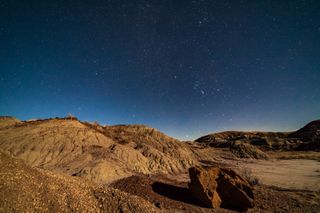
By 10 p.m. the entirety of the Winter Hexagon is above the eastern horizon. The Hexagon is a set of six stars from six different constellations; going clockwise one starts with Rigel, marking the right foot (from the perspective of the observer) of Orion; Rigel is to the right of the stars of Orion’s belt before midnight. Closer to the horizon and to the left is Sirius, the brightest star in the sky and the alpha star of Canis Major, the Bog Dog. To the left (east) and north of Sirius is Procyon, which marks the Little Dog, Canis Minor.
North of Procyon (before midnight, to the left and upwards) of Procyon is Pollux, the head of one of the Twins (Gemini). North and west (upwards and to the right) of Pollux is Capella, the brightest star in Auriga, the Charioteer, and moving westwards and south one sees Aldebaran, with Jupiter nearby. (Aldebaran can be recognized by its distinctly reddish-orange color in relation to Jupiter, which is more yellow-white). Moving south from Aldebaran one passes Betelgeuse to complete the hexagon at Rigel again.
RELATED STORIES:
From the mid-southern latitudes, the sky doesn’t get fully dark until about 10 p.m. Southern Hemisphere observers will see Sirius towards the east, with Orion in an “upside down” orientation to the left (northward). Turning southeast (to the right) one will see Canopus, the brightest star in the constellation Carina, the Keel of the Ship. It will be about 40 degrees high, and distinct. Most often associated with the legendary Argo that carried Jason and his crew.
Sirius, Rigel, and Canopus form a triangle – it looks a bit like a right-angle triangle with the 90-degree angle at Sirius. One can use that to spot Achernar, the end of Eridanus the River, by drawing a line that goes from Sirius directly between Canopus and Rigel (imagine drawing a line from the 90-degree corner of a right triangle that bisects the hypotenuse). Achernar is quite high in the sky – 75 degrees from the latitude of Christchurch. Achernar is one end of the river, and one can trace it all the way back to a star near Rigel that marks the other end.
Looking directly southwards, one will see the Southern Cross close to the horizon; from Christchurch it swings downward and starts rising after 10 p.m. – from New Zealand the Southern Cross never sets. To the right of it is Alpha Centauri, also known as Rigil Kentaurus, our solar system’s nearest stellar neighbor.

